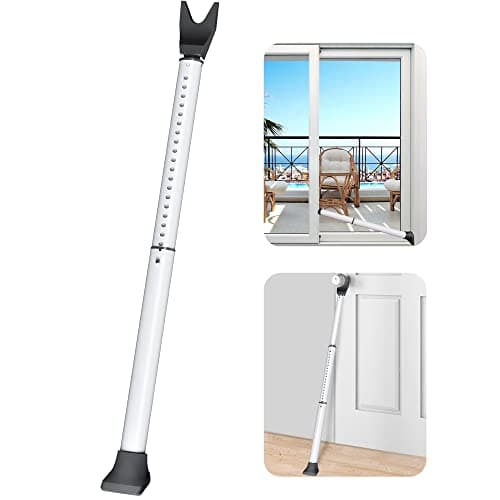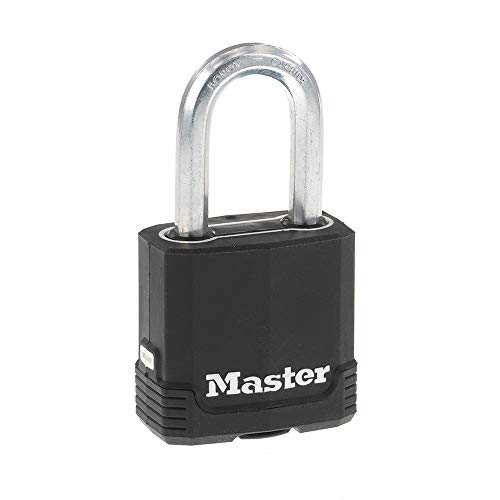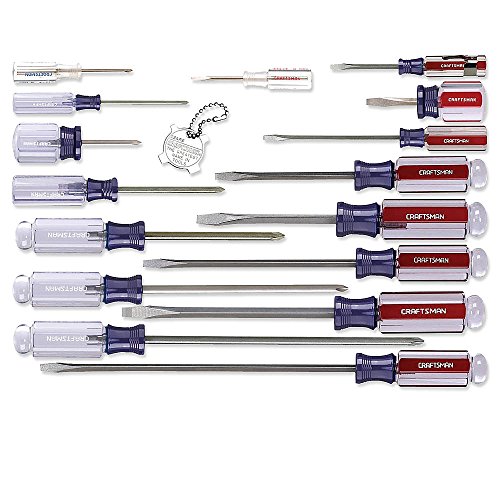In this step-by-step guide, I will provide you with simple and effective techniques to secure your outdoor spaces. First, assess the current state of your garden or yard and identify any potential vulnerabilities, such as weak points in fences or overgrown vegetation that can provide hiding spots for intruders.
Next, install sturdy and reliable fencing around your property to create a physical barrier. Ensure that the fence is tall enough to deter trespassers and consider adding features like spikes or a lockable gate for added security. Additionally, trim any hedges or trees near the fence to eliminate potential hiding spots.
To further enhance security, consider installing outdoor lighting around your outdoor spaces. Motion sensor lights are particularly effective as they can deter intruders and alert you to any suspicious activity.
Another important step is to secure any access points to your garden or yard, such as gates or entrances. Install strong locks or latches on gates and consider using keyless entry systems or security cameras for added protection.
Lastly, consider implementing additional security measures such as installing a security camera system or an alarm system. These can act as a deterrent and provide valuable evidence in case of any incidents.
By following these steps, you will be able to significantly improve the security of your outdoor spaces, ensuring the safety of your property and loved ones.
Top Home Security Systems
Ensuring the Protection of Your Outdoor Furniture
Assess the Current Security Measures
To assess the current security measures in your outdoor spaces, start by evaluating the existing fencing, locks, lighting, and other security features. Examine each element to identify any vulnerabilities or areas that require improvement. Take note of any damage, outdated equipment, or weak points that could be exploited. Document your findings and prioritize the necessary upgrades or repairs based on their impact on overall security.
Install Strong Fencing
To secure your outdoor spaces effectively, follow these steps to install strong and reliable fencing:
- Choose a sturdy material – Opt for materials such as metal or wood that provide durability and strength for your fencing. These materials are known for their ability to withstand external forces and deter unauthorized access.
- Determine the appropriate height – Consider the purpose of your fencing and choose an appropriate height to prevent easy scaling or jumping over. A height of at least 6 feet is generally recommended to deter intruders effectively.
- Prepare the area – Clear any vegetation, debris, or obstacles that may hinder the installation process. Ensure the ground is level and suitable for installing the fence posts securely.
- Mark the fence line – Use stakes and string to mark the desired fence line. This will serve as a guide for the placement of fence posts and panels.
- Install the fence posts – Dig holes for the fence posts at regular intervals along the marked fence line. The depth of the holes should be at least one-third of the height of the fence post. Insert the posts securely and ensure they are level and aligned.
- Attach the fence panels – Once the fence posts are in place, attach the fence panels to the posts using appropriate fasteners. Make sure the panels are properly aligned and secure.
- Add finishing touches – Depending on the type of fencing chosen, you may need to add additional components such as gates, locks, or decorative elements. Follow the manufacturer’s instructions for proper installation and ensure everything is securely in place.
By following these steps, you can successfully install strong and reliable fencing to enhance the security of your outdoor spaces.
Add Locks and Gates
To install secure locks and gates, start by choosing high-quality padlocks or electronic locks that are resistant to tampering. Ensure that all access points, such as fences and gates, are properly secured. Use sturdy bolts or hinges to reinforce the gates, and consider adding additional security measures such as keypads or security cameras for added protection. Regularly inspect and maintain the locks and gates to ensure they are in good working condition.
Improve Lighting
Improve Lighting
Proper lighting is a crucial aspect of outdoor security. To enhance the safety of your outdoor spaces, follow these steps:
- Install motion sensor lights: Place motion sensor lights around your outdoor areas, such as entranceways, walkways, and garages. These lights will automatically turn on when they detect any movement, ensuring that any suspicious activity is illuminated.
- Position lights strategically: Consider the layout of your property and identify areas that may be susceptible to intruders. Install lights in these areas to deter potential trespassers.
- Choose bright and energy-efficient bulbs: Opt for bright LED bulbs that provide ample illumination while consuming less energy. This will ensure that your outdoor spaces are well-lit without significantly increasing your electricity bills.
- Regularly maintain and replace bulbs: Periodically check your outdoor lights to ensure that they are functioning properly. Replace any burnt-out bulbs promptly to maintain optimal lighting conditions.
Remember, well-lit areas act as a deterrent for potential intruders, enhancing the security of your property.
Trim Overgrown Vegetation
Overgrown vegetation can create hiding spots for intruders, increasing the risk of unauthorized access to your outdoor spaces. To enhance visibility and minimize this risk, it is important to regularly trim any bushes, hedges, and trees in the vicinity. Here are a few examples to guide you:
- Trimming bushes: Start by equipping yourself with pruning shears or hedge clippers. Identify any overgrown or dense areas of bushes near entrances or windows. Trim back the branches, focusing on removing any excess growth that obstructs visibility or provides cover. Dispose of the trimmings in a proper manner.
- Pruning hedges: Begin by using hedge clippers or a pruning saw to remove any dead or diseased branches from the hedge. Trim the sides of the hedge to maintain a neat and tidy appearance, while ensuring that it doesn’t grow too wide. Pay special attention to the lower sections, as these can provide hiding spots. Dispose of the clippings responsibly.
- Trimming trees: For trees, it may be necessary to use a ladder, pruning pole, or even hire a professional arborist for larger trees. Start by removing any dead or diseased branches that could potentially fall and cause damage. Next, focus on trimming any low-hanging branches that could provide access to windows or rooftops. Finally, thin out the crown by selectively removing some branches to improve visibility and reduce potential hiding spots.
Regularly inspect your outdoor spaces and repeat the trimming process as needed. Remember to follow any local regulations or restrictions regarding tree trimming. By maintaining well-trimmed vegetation, you will increase visibility, deter potential intruders, and create a safer environment for yourself and others.
Install Security Cameras
Consider installing security cameras to monitor your outdoor spaces. Place the cameras strategically to cover vulnerable areas. Opt for high-resolution cameras with night vision capabilities for better surveillance.
Use Alarms and Sensors
To implement an alarm system with sensors in your outdoor spaces, start by selecting a suitable system that can detect any unauthorized entry or movement. Choose a system that can be connected to a monitoring service or directly alert you when triggered. Install the sensors strategically in areas vulnerable to potential breaches, such as doors, windows, or high-traffic areas. Ensure that the sensors are properly connected to the alarm system and test their functionality regularly to guarantee effective detection and timely alerts.
Secure Valuables and Equipment
- Lock it up: When it comes to protecting your valuables and equipment in outdoor spaces, make sure to properly secure them. Use lockable storage containers to keep your items safe from theft.
- Anchor it down: For heavier items, such as machinery or furniture, anchor them securely to prevent any unauthorized removal. This will add an extra layer of protection and deter potential thieves.
- Mark it uniquely: Consider marking your belongings with unique identifiers, such as engraving or labeling. This will not only help you identify them easily but also make it more difficult for thieves to sell or dispose of your property.
Remember, taking these proactive steps will greatly reduce the risk of theft and give you peace of mind knowing that your valuables and equipment are well-protected.
Regular Maintenance and Inspections
Regularly inspect your outdoor spaces to maintain their security. Look for signs of damage, such as broken locks or hinges on gates, and repair or replace them as needed. Test the functionality of security features, such as cameras or motion sensors, and ensure they are working properly. Additionally, identify any potential weaknesses in your outdoor space, such as overgrown shrubs or poorly lit areas, and take steps to address them, such as trimming the shrubs or installing additional lighting. By conducting these inspections and promptly addressing any issues, you can help ensure the security of your outdoor spaces.
Key Takeaways
In conclusion, safeguarding your outdoor spaces, such as gardens and yards, is of paramount importance. By carefully considering the tips and implementing the suggested security measures, you can significantly reduce the risk of theft, trespassing, and other potential threats. Remember, maintaining a safe and secure environment not only protects your property but also provides peace of mind for both you and your loved ones. So, take the necessary steps to secure your outdoor spaces today and enjoy a worry-free outdoor experience.











I followed these steps to secure my garden and it made a huge difference! I installed strong fencing, added locks and gates, and improved the lighting. I also trimmed the overgrown vegetation and installed security cameras. Now I feel much safer in my own outdoor space. Thanks for the great tips!
I used the information from this guide to secure my backyard and it worked like a charm. I installed a strong fence and added a lock and gate. I also improved the lighting and trimmed the vegetation. It made a noticeable difference in the security of my property. Highly recommend following these steps!
These tips are great for basic security measures, but can you provide any advanced tips for securing outdoor spaces? I’d love to know if there are additional steps I can take to further enhance the security of my garden.
Thank you for your comment! We’re glad you found the basic security measures helpful. When it comes to advanced tips, you can consider investing in smart security systems that integrate cameras, alarms, and sensors with smartphone connectivity. This allows for remote monitoring and instant notifications. Additionally, using high-security locks and reinforcing doors and windows can further enhance security. Remember to always assess your specific needs and consult with professionals for personalized advice.
Thank you for sharing your success story! We’re thrilled to hear that these steps helped secure your garden and make you feel safer. It’s important to take proactive measures to protect our outdoor spaces. If you have any other tips or experiences to share, feel free to let us know!
I agree with most of the steps mentioned in this guide, but I’m not sure about installing security cameras. Some people might find them invasive and it’s important to respect privacy. Are there any alternative options to consider?
Thank you for your comment and raising a valid concern. Security cameras can indeed raise privacy concerns, and it’s important to strike a balance. Alternatives to consider include motion sensor lights, outdoor alarms, or even neighborhood watch programs. These can provide added security without invading privacy. It ultimately depends on individual preferences and circumstances.